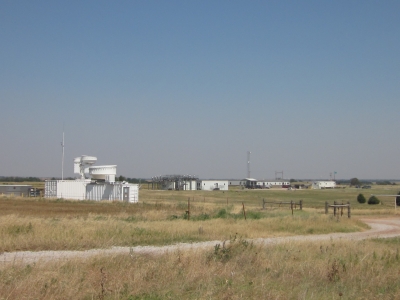New Paper Explores Southern Great Plains Warm and Dry Model Bias
Published: 19 November 2017

A recent Nature Communications paper looks at the causes of warm and dry bias, or offsets from observations, over the ARM Climate Research Facility’s Southern Great Plains (SGP) atmospheric observatory and how they affect earth system projections.
Because of limited computing power, earth system models must use simplified representations of clouds and convective systems to calculate their effects on earth system processes. However, significant model biases can form if those representations cannot accurately simulate heavy rain from organized convective systems—a common occurrence over the SGP in summer.
“We know that models have warm and dry biases in this region,” says Stony Brook University researcher Minghua Zhang, one of the paper’s corresponding authors. “The finding that the dry bias leads the warm bias helped us to narrow the search for the cause of the model deficiencies.”
Researchers also discovered that larger model biases led to projections of warmer temperatures in the region. To reduce uncertainties in those projections, Zhang says, more accurate simulation of the intensity and frequency distribution of rain is necessary.
“This will require better representations of mesoscale dynamics, precipitation physics, cloud-radiative interactions, and land-atmosphere coupling in the models,” Zhang says.
Read the research highlight.
The ARM Climate Research Facility is a DOE Office of Science user facility. The ARM Facility is operated by nine DOE national laboratories, including Argonne National Laboratory.
Keep up with the Atmospheric Observer
Updates on ARM news, events, and opportunities delivered to your inbox
ARM User Profile
ARM welcomes users from all institutions and nations. A free ARM user account is needed to access ARM data.


















